BloostonLaw Private Users Update Published by the Law Offices of Blooston, Mordkofsky, Dickens, Duffy & Prendergast, LLP [Selected portions reproduced here with the firm's permission.] www.bloostonlaw.com Comment Sought On Three Requests To Use Part 22 Frequencies For Public Safety Operations The FCC’s Public Safety and Homeland Security Bureau has requested comment on three separate requests to use Part 22 frequencies for public safety operations. First, the state of Wyoming proposes to use eleven Part 22 Paging and Radiotelephone Service channel pairs at multiple locations spread over Basic Economic Area (BEA) Nos. 141, 143, and 144 as part of WyoLink, a statewide narrowband digital trunked P-25 radio communications system. Second, Marin County, California, seeks waiver relief pursuant to use twelve point-to-multipoint UHF frequencies allocated for Part 22 public mobile service. Third, the city of Bayonne, New Jersey, seeks waiver relief pursuant to use a frequency interleaved between channels allocated for Part 22 point-to-multipoint operation and a frequency interleaved between channels allocated for Part 22 trunked mobile operation. Specifically, Bayonne seeks to modify its existing public safety radio communications system by adding frequencies 470.1500 and 473.1500 MHz. Wyoming: Wyoming states that it expects WyoLink to be used by participating local, state, and federal agencies to support critical public safety activities serving Wyoming’s population of over 500,000 residents and its more than 11 million annual visitors and tourists. Although Wyoming estimates that the requested Part 22 channels represent less than two percent of its proposed system, it states that the subject channels are an essential component of its efforts to upgrade its aging and limited radio communications facilities. In support of its request, Wyoming claims (i) that suitable spectrum from the Public Safety pool is either unavailable or unsuitable to meet its requirements and (ii) that the channels should not cause harmful interference to other spectrum users. Wyoming submits three engineering studies purporting to show that, in no case does the interference contour of a proposed channel overlap with the service contour of any incumbent, site-based co-channel licensee and that the interference contours of the proposed sites do not extend to adjacent Economic Areas awarded to geographic area based licensees. Wyoming also provides a statement from a frequency coordinator indicating that no other spectrum allocated to public safety services is immediately available to satisfy the requested public safety service use. The frequency coordinator asserts that Wyoming was not able to coordinate a sufficient number of Part 90 Public Safety channels needed to meet the spectrum needs of the proposed system, and that alternative spectrum outside of the Part 90 Public Safety pool is essential to fulfill the channel requirements of the proposed statewide system. As a part of the analysis under Section 337 of the Communications Act, as well as the Commission’s waiver criteria, the FCC also seeks comment on whether the 700 MHz public safety band would provide a viable alternative, particularly in light of the approaching February 17, 2009, digital television transition date, and the Commission’s recent actions in facilitating a nationwide, interoperable public safety network. Although initial comments in this DA 08-02 proceeding were due April 17, interested parties may file reply comments by April 24. Marin County: Part 22 of the Commission’s rules allocates the requested frequencies for point-to-multipoint public mobile service in the San Francisco, California urbanized area. Because the requested frequencies are regulated as Commercial Mobile Radio Service (CMRS) under Part 20 and are not allocated for public safety operations, Marin County requests a waiver of Sections 20.9(a)(6) and 22.621. Marin County asserts that the requested frequencies will be used to alleviate frequency congestion in the greater San Francisco area, to provide for interoperability with other public safety radio systems, and to support an existing integrated “Public Safety Law Enforcement and Fire Service” communications system in the 470-512 MHz band. Marin County adds that it has extensive urban, suburban, and rural areas, is vulnerable to widespread forest and residential fires, earthquake damage, and landslides, is responsible for assisting in wilderness and water rescues, and provides essential police services to populated and unpopulated areas. Marin County specifies that it will use two of the requested frequencies, 482.2375 and 485.2375 MHz, as a conventional mobile/mobile relay channel and that it will use the other ten frequencies as simplex frequencies for either low-power channels or “on-scene” or “tactical” channels. Marin County contends that off-the-air monitoring and searches of the Commission’s ULS database show that no suitable public safety group frequencies are available in the 470-512 MHz band. Additionally, Marin County submits an engineering study indicating that, although unassigned public safety frequencies in the 30-50 MHz, 150-174 MHz, and 450-470 MHz bands exist, assignment of the unassigned frequencies would cause potential interference to existing adjacent channel stations. The APCO frequency coordinator for northern California submits that there are no “available channels in the existing channel allotments for Public Safety Services that . . . would not result in interference either to the County of Marin or to a co-channel or adjacent channel licensee.” The APCO frequency coordinator also states that “[b]ecause of the trunked configuration of [Marin County’s] present system it is impractical to add channels in other frequency bands.” As a part of the analysis under Section 337 of the Act, as well as the Commission’s waiver criteria, the FCC also seeks comment on whether the 700 MHz public safety band would provide a viable alternative, particularly in light of the approaching February 17, 2009 digital television transition date, and the Commission’s recent actions in facilitating a nationwide, interoperable public safety network. Interested parties may file comments on the Waiver Request by April 24, and replies by May 5. All comments and reply comments should reference DA 08- 803. Bayonne: Bayonne is located in the New York-Northeastern New Jersey urbanized area. In 2004, Bayonne was originally authorized to operate this system as Station WQBL378, with an associated waiver granted pursuant to Section 337(c). This authorization allowed Bayonne to operate a public safety radio system on unassigned frequencies allocated for non-public safety use. Specifically, the frequencies were either allocated under Part 22, 47 C.F.R. Part 22, as paging control and trunked mobile channels, or interleaved between such channels. Bayonne seeks a similar waiver, requesting to add nonpublic safety frequencies 470.1500 MHz and 473.1500 MHz to its existing public safety radio system. Bayonne states that the requested frequencies are compatible with the frequencies authorized for its radio system, and the frequencies would provide low power communications and surveillance capabilities. Bayonne’s application indicates that the effective radiated power of the two frequencies would be limited to four watts. Bayonne further avers that no public safety frequencies are available or suitable for its radio system, and that its proposed use of the two frequencies would not result in harmful interference to or from other licensees. The APCO New Jersey Frequency Advisor states that it has conducted “extensive searches in the VHF, UHF, T[-]Band and 800 MHz bands” and determined that “there are no available part 90 frequencies.” As a part of the analysis under Section 337 of the Act, as well as the Commission’s waiver criteria, the FCC also seeks comment on whether the 700 MHz public safety band would provide a viable alternative, particularly in light of the approaching February 17, 2009, digital television transition date, and the Commission’s recent actions in facilitating a nationwide, interoperable public safety network. Interested parties may file comments on the Waiver Request by April 24, and replies by May 5. All comments and reply comments should reference DA 08-804. BloostonLaw contacts: Hal Mordkofsky, John Prendergast, and Richard Rubino. FCC Fines Florida Traffic Control For Unauthorized Use Of Radio Equipment The FCC has issued a monetary forfeiture in the amount of $3,200 to Traffic Control Products of Florida for operation of radio transmission equipment inconsistent with the terms of its authorization. On October 23, 2007, in response to a complaint of interference from private land mobile station WPFS376, agents from the Commission’s Tampa Office of the Enforcement Bureau investigated and found the source of the interference to be a wireless transmitter operating on 467.8375 MHz, station WPFS376’s authorized frequency. The wireless transmitter was being used to control portable traffic signal lights positioned over both ends of a bridge that was being constructed in Englewood, Florida, about one mile away from station WPFS376. The agents spoke with the construction supervisor for the bridge who stated the wireless signal lights were set up about two months ago, the same time station WPFS376 started to receive the interference, and operated by Traffic Control to control the traffic on the bridge. An agent contacted a representative from Traffic Control to determine its call sign and get more information on its license. The representative from Traffic Control was warned that operation of the signal lights was causing harmful interference to a co-channel licensee. On October 24, 2007, agents from the Tampa Office determined that the wireless station was limited to a 32 km radius. The representative from Traffic Control stated on October 24, 2007 that he had only just learned of the geographic limitation of its license. On October 26, 2007, an agent from the Tampa Office reminded a representative from Traffic Control that it was operating outside its licensed 32 km radius and was continuing to cause interference to a licensed user. The representative from Traffic Control stated the bridge transmitter would be “hard-wired” by the end of the week so the transmitter could be turned off. On November 2, 2007 the agent received a message from Traffic Control that it had installed a cable to “hardwire” the traffic signals and had turned the transmitter off. On November 5, 2007, a representative from station WPFS376 confirmed the interference stopped on November 2, 2007. On March 10, 2008, the Tampa Office issued a Notice of Apparent Liability for Forfeiture to Traffic Control in the amount of four thousand dollars ($4,000), for the apparent willful and repeated violation of Section 90.403(a)(2) of the Rules. Traffic Control submitted a response to the NAL requesting a reduction or cancellation of the proposed forfeiture. The FCC said that “although we appreciate Traffic Control’s efforts to promptly correct the violation, corrective action taken to come into compliance with the Rules is expected, and does not nullify or mitigate any prior forfeitures or violations.” The Commission added: “Traffic Control requests a reduction of the forfeiture because it has not experienced prior problems of this type during its many years as a government contractor. Based on Traffic Control’s history of compliance with the Rules, we reduce the forfeiture [from $4,000] to $3,200.” BloostonLaw contacts: Hal Mordkofsky, John Prendergast, and Richard Rubino. FCC Extends Wave 4 Border Area Negotiation Periods The FCC’s Public Safety and Homeland Security Bureau (PSHSB) has extended the mandatory negotiation periods for border area NPSPAC (Stage 2) and non-NPSPAC (Stage 1) licensees in Wave 4 to July 1, 2008, and postponed the beginning of the mediation period for such licensees until July 2, 2008. As noted in prior public notices, rebanding of border area licensees in Wave 4 is affected by ongoing international discussions on U.S.-Canada and U.S.-Mexico border issues. Extending the negotiation period for these licensees will alleviate administrative burdens on licensees, avoid unnecessary rebanding expenditures, and provide additional time for resolution of border issues and issuance of frequency designations by the Transition Administrator (TA), the FCC said. During the extended negotiation period, Wave 4 border area licensees are not required to engage in planning or negotiation prior to the receipt of frequency designations from the TA, though the FCC encourages them to engage in such activities to the extent that they are not frequency-dependent and would not result in unnecessary duplication of costs. If licensees choose to engage in such planning and negotiation activities, Sprint Nextel shall pay licensees’ reasonable costs in accordance with the requirements of the Commission’s orders in this proceeding. This extension extends the filing freeze on new applications in Wave 4 border areas until thirty working days after the July 1, 2008, date for completion of negotiations, i.e., until August 13, 2008. However, the freeze does not apply to modification applications that do not change an 800 MHz frequency or expand an 800 MHz station’s existing coverage area (e.g., administrative updates), assignments/transfers, or renewal-only applications. In addition, Wave 4 border area licensees may expand their facilities or add channels during the freeze, based on an appropriate showing of public interest need, using the Special Temporary Authorization (STA) procedures described in the Bureau’s December 2006 STA Guidance PN. Facilities that are authorized under the STA procedures will be subject to rebanding, and Sprint will pay the cost of relocating such facilities to their new channel assignments. The extension of negotiations and the application freeze does not apply to Wave 4 licensees outside the border areas. Such licensees remain subject to the previously announced negotiation and mediation schedules for this wave. BloostonLaw contacts: Hal Mordkofsky, John Prendergast, and Richard Rubino. FCC Grants More Time To Construct Paging License The FCC has granted the Rochester, New York, Regional Transit Service’s (RTS’s) request for an extension of time to construct a geographic area-based Part 22 paging license. Specifically, RTS requested a waiver of the construction deadline until May 31, 2008, to complete construction of the Rochester license. RTS is a wholly-owned subsidiary of the Rochester Genesee Regional Transportation Authority, a regional transit authority established in 1969 by the New York State legislature as one of four state-mandated transit authorities. RTS acquired the Rochester license (where the license is a channel pair) in June 2002 as the winning bidder in Auction No. 40. RTS plans to implement a radio system that allows its supervisors and management personnel to have access to dedicated communications channels in order to manage its transit bus fleet. RTS states that its system will better allow supervisors to dispatch extra buses and/or re-route buses, including during weather emergencies and mechanical breakdowns. RTS’s June 15, 2007, Waiver Request sought an extension until 45 days after it received Canadian clearance. RTS’s January 8, 2008, amendment stated that Canadian clearance had been obtained, but due to the severe winter conditions that occur in Rochester, NY, it needed an extension until May 31, 2008. The FCC said it believes that the public interest would be served by extending the construction deadline for the Rochester license until May 31, 2008. BloostonLaw contacts: Hal Mordkofsky, John Prendergast, and Richard Rubino. FCC Cancels Proposed $4k Forfeiture For NSTN The FCC has canceled a $4,000 monetary forfeiture issued to National Science Technology Network (NSTN) in Corona, California. On December 13, 2006, in response to a complaint of co-channel interference, an agent from the Enforcement Bureau’s Los Angeles Office conducted an inspection of NSTN Trunked Radio Systems located on Pleasant Peak and Sierra Peak in Corona, California. The agent determined that Pleasant Peak was the primary Trunked Radio System site. On December 19, 2006, the Los Angeles agent attempted to conduct an inspection of the control point listed on the WPME695 authorization at 4091 Glencoe Avenue, Marina Del Ray, California. The agent found no control point at that address. NSTN advised the FCC that the original Marina Del Ray property had been sold and demolished five years earlier. On June 19, 2007, the Los Angeles Office issued a NAL in the amount of $4,000 to NSTN. In the NAL, the Los Angeles Office found that NSTN apparently repeatedly violated Section 1.903(a) of the Rules by failing to operate WPME695 from a control point listed in a valid authorization granted by the Commission. NSTN filed a response to the NAL on June 21, 2007. In its Response, NSTN argues that the NAL should be canceled because NSTN did not operate from an incorrect control point as the station has no control points, and the address listed was merely an out-of-date contact address. The FCC noted that NSTN failed to adequately respond to the Los Angeles Office’s LOI concerning the location of its control points by failing to inform the Los Angeles Office that it operated without control points. Nonetheless, given the information in the Response, which was not available to the Los Angeles Office at the time of the NAL, the FCC found that NSTN did not operate WPME695 in violation of Section 1.903(a) of the Rules. Consequently, it canceled the proposed forfeiture. BloostonLaw contacts: Hal Mordkofsky, John Prendergast, and Richard Rubino. FCC Clarifies Information Needed To Demonstrate Non-Construction In a Memorandum Opinion and Order, the FCC has denied a request by National Science and Technology Network, Inc. (NSTN) to review a previous Order denying NSTN’s informal petition to dismiss an application to assign two private land mobile licenses (KLH414 and KL3784) from National Ready Mix Concrete Co. (NRMC) to Mobile Relay Associates (MRA). NSTN had sought to demonstrate that NMRC had permanently discontinued the stations in question and therefore had nothing to assign. First, NSTN asserted that NRMC had been NSTN’s customer, paying NSTN to operate on NSTN’s co-channel Station WPPZ334, Glendale, California. In opposition, MRA submitted documentation and sworn declarations from principals of NRMC and MRA attesting that the NRMC stations were in continuous operation, including the period when NRMC was a customer of NSTN, and that NRMC purchased service on NSTN’s station to supplement, rather than replace, its own operations. NSTN disputed that NRMC maintained its own operations and submitted a declaration from NSTN’s president asserting that NSTN “routinely monitored the channel” and never heard NRMC use its own call signs in its transmissions. However, the FCC concluded that NSTN had not demonstrated that the licenses for Stations KLH414 and KL3784 cancelled automatically due to permanent discontinuance of operation because it was plausible that NRMC purchased service on NSTN’s co-channel station to augment its own operations, and the monitoring mentioned by NSTN fell short of the detailed monitoring studies required by Commission precedent to substantiate permanent discontinuance of operations. The FCC states that permanent discontinuance of station operations can be substantiated without submitting detailed monitoring studies. The FCC clarified there are circumstances where monitoring studies are unnecessary, such as an undisputed statement from the site owner/manager that the putative licensee no longer maintains a transmitter at the authorized site, or persuasive evidence that the licensee no longer exists, or an admission by the licensee that the facility ceased operating. Absent such evidence, however, the FCC stated that a claim of permanent discontinuance of operations that relies materially on the complainant’s contention that the licensee has not been heard on the authorized frequencies must, under Commission precedent be supported by continuous monitoring for the relevant “permanent discontinuance of operation” period. BloostonLaw contacts: Hal Mordkofsky, John Prendergast, and Richard Rubino. |







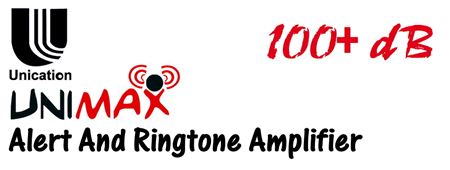

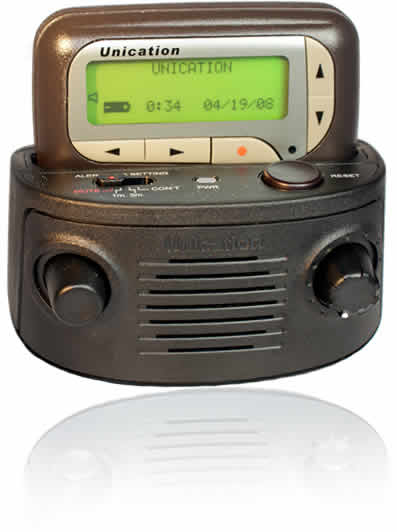








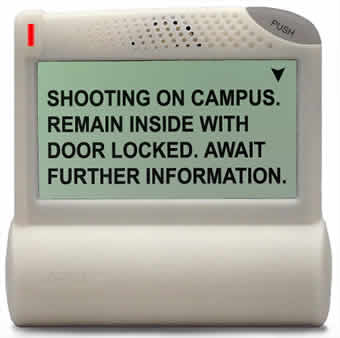

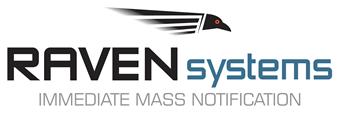

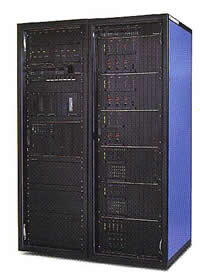
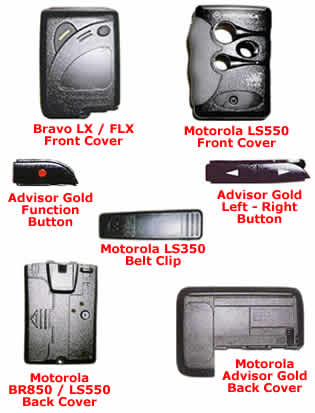

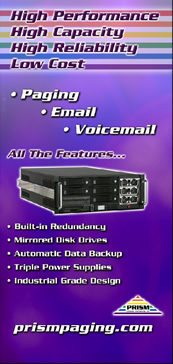



 A whole bunch of new Motorola handsets seem to be under way. A leaked Motorola 2008 roadmap disclosed all the information and we are more than happy to pass it on.
A whole bunch of new Motorola handsets seem to be under way. A leaked Motorola 2008 roadmap disclosed all the information and we are more than happy to pass it on.

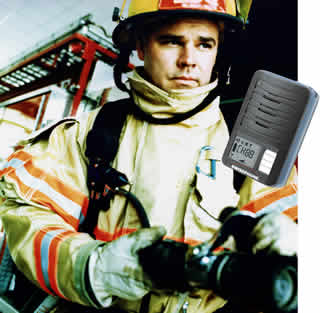
 Stopwatch
Stopwatch 

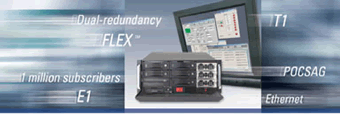



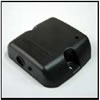

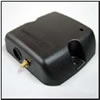
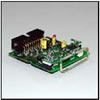


 UCSF Prepares for the Worst in Aftermath of VA Tech Tragedy
UCSF Prepares for the Worst in Aftermath of VA Tech Tragedy 
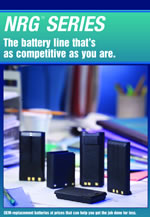


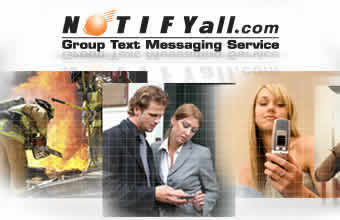


















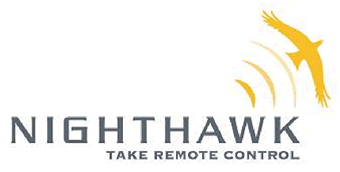






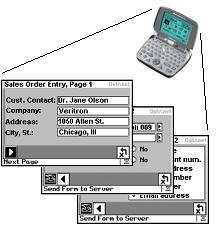 If you see someone in the field (like salespeople, technicians, and delivery people) using paper forms, their company could probably save a pile of money, and get much better timeliness, accuracy and efficiency, by using converting to Outr.Net's Wireless Forms. Custom applications for as little as $995, delivered in just a few days.Outr.Net has a web page on Wireless Forms for Timeports at:
If you see someone in the field (like salespeople, technicians, and delivery people) using paper forms, their company could probably save a pile of money, and get much better timeliness, accuracy and efficiency, by using converting to Outr.Net's Wireless Forms. Custom applications for as little as $995, delivered in just a few days.Outr.Net has a web page on Wireless Forms for Timeports at: 




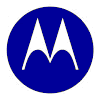 OUR FUNDAMENTAL OBJECTIVE
OUR FUNDAMENTAL OBJECTIVE